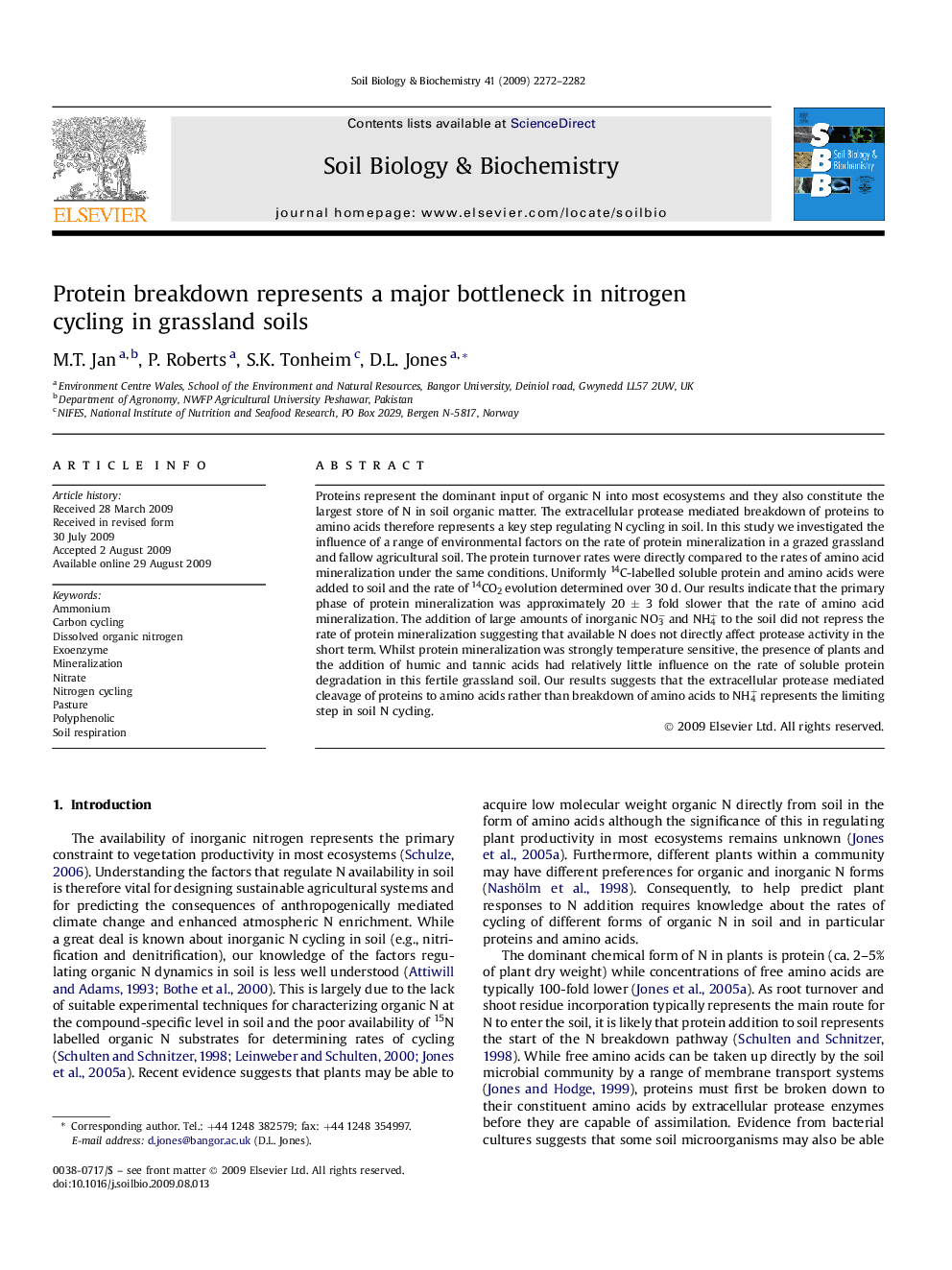| Article ID | Journal | Published Year | Pages | File Type |
|---|---|---|---|---|
| 2025436 | Soil Biology and Biochemistry | 2009 | 11 Pages |
Proteins represent the dominant input of organic N into most ecosystems and they also constitute the largest store of N in soil organic matter. The extracellular protease mediated breakdown of proteins to amino acids therefore represents a key step regulating N cycling in soil. In this study we investigated the influence of a range of environmental factors on the rate of protein mineralization in a grazed grassland and fallow agricultural soil. The protein turnover rates were directly compared to the rates of amino acid mineralization under the same conditions. Uniformly 14C-labelled soluble protein and amino acids were added to soil and the rate of 14CO2 evolution determined over 30 d. Our results indicate that the primary phase of protein mineralization was approximately 20 ± 3 fold slower that the rate of amino acid mineralization. The addition of large amounts of inorganic NO3− and NH4+ to the soil did not repress the rate of protein mineralization suggesting that available N does not directly affect protease activity in the short term. Whilst protein mineralization was strongly temperature sensitive, the presence of plants and the addition of humic and tannic acids had relatively little influence on the rate of soluble protein degradation in this fertile grassland soil. Our results suggests that the extracellular protease mediated cleavage of proteins to amino acids rather than breakdown of amino acids to NH4+ represents the limiting step in soil N cycling.
